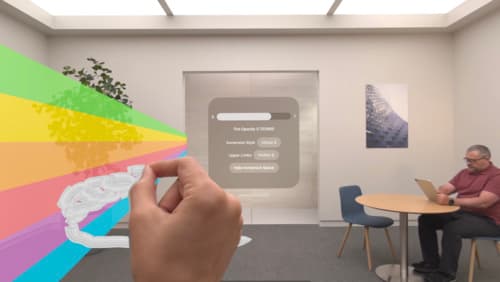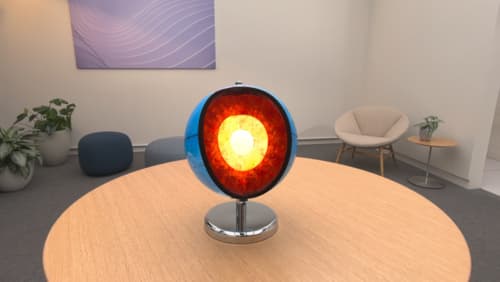how to made AR
Asked on 2024-08-12
1 search
To create an AR experience, you can utilize several tools and frameworks presented at WWDC. Here are some key steps and resources:
-
RealityKit and ARKit: These frameworks are essential for building AR applications. RealityKit provides powerful 3D capabilities, and ARKit helps with spatial tracking and scene understanding. You can learn more about using these tools in the session Build a spatial drawing app with RealityKit.
-
Object Tracking: If your AR experience involves tracking real-world objects, you can use the new object tracking features in visionOS. This involves creating a 3D model of the object, training a machine learning model using CreateML, and then using this reference object in your app. For more details, check out the session Explore object tracking for visionOS.
-
3D Model Creation: You can create 3D models using tools like Reality Composer or capture them using your iPhone. The session Discover area mode for Object Capture provides insights into creating high-quality 3D models.
-
Rendering and Scene Integration: For rendering 3D content and integrating it with the real world, you can use Metal and ARKit. This allows for realistic interactions and occlusions in mixed reality experiences. More information can be found in the session Render Metal with passthrough in visionOS.
These sessions provide a comprehensive guide to building AR experiences using Apple's latest technologies.

Render Metal with passthrough in visionOS
Get ready to extend your Metal experiences for visionOS. Learn best practices for integrating your rendered content with people’s physical environments with passthrough. Find out how to position rendered content to match the physical world, reduce latency with trackable anchor prediction, and more.

Build a spatial drawing app with RealityKit
Harness the power of RealityKit through the process of building a spatial drawing app. As you create an eye-catching spatial experience that integrates RealityKit with ARKit and SwiftUI, you’ll explore how resources work in RealityKit and how to use features like low-level mesh and texture APIs to achieve fast updates of the users’ brush strokes.

Explore object tracking for visionOS
Find out how you can use object tracking to turn real-world objects into virtual anchors in your visionOS app. Learn how you can build spatial experiences with object tracking from start to finish. Find out how to create a reference object using machine learning in Create ML and attach content relative to your target object in Reality Composer Pro, RealityKit or ARKit APIs.
